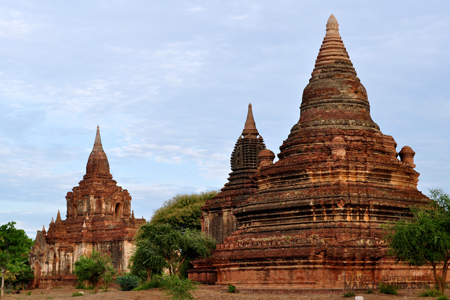Estimated 11th century
Votive tablets with the seals of Anawrahta (r. 1044-1077) and his son Sawlu (r. 1077-1084) were found in this pagoda. There were others with writings in Mon, Pali and Nagari, an ancient script that was rarely used even in the early Bagan period. These mark the pagoda’s construction to be during Anawrahta’s time if not earlier.

The large, imposing spire is set on a square gu or temple: thus it is a combination of the temple and the spire, a unique design. The corridors running along each side are about 70 ft long. Behind each of the four entrance halls and across the corridor, a narrow tunnel leads to the centre core where four images are enshrined, one on each side. Small openings from the middle terrace beam in light to shine on the faces of these images. There are good stucco designs and beautiful wall paintings with brilliant colours.
